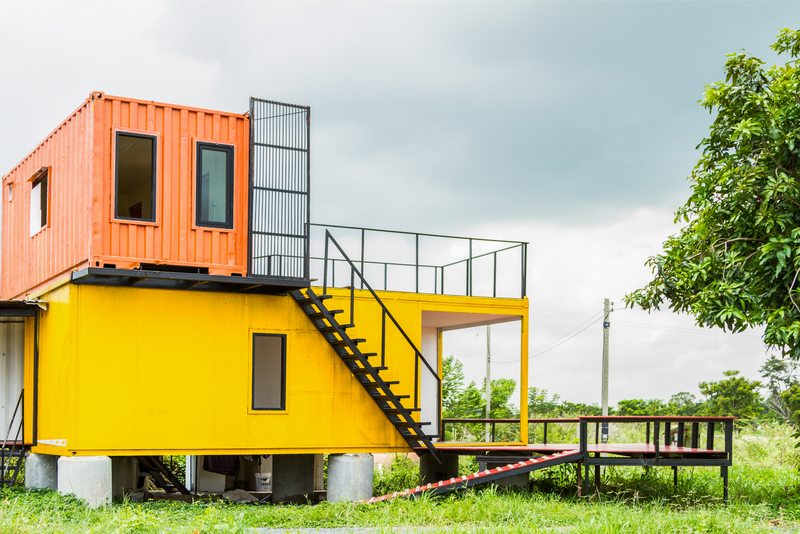Reimagine Discards: Upcycling Tips for Eco-Friendly Living
Imagine giving new life to items you once deemed as waste. Welcome to the creative world of upcycling! Embracing sustainable living doesn't need to be complicated--or expensive. By reimagining discards, you can transform old objects into functional, beautiful, and environmentally friendly pieces. This guide will walk you through the ins and outs of eco-friendly upcycling, with tips, inspiration, and practical advice for making the most of what you already have.
Understanding Upcycling: Turning Waste Into Wonder
Before delving into actionable tips, it's important to distinguish upcycling from similar eco-practices. Upcycling--sometimes called creative reuse--means converting discarded or unwanted materials into products of higher value or quality. Unlike recycling, which breaks materials down to create new items (often with a loss in quality), upcycling maintains the original materials' integrity and adds value with creativity.
Why Upcycling Is Vital for an Eco-Friendly Lifestyle
- Reduces Waste: By repurposing items, you divert tons of rubbish from landfills each year.
- Lowers Carbon Footprint: Upcycling uses less energy compared to producing new goods or even recycling processes.
- Promotes Creativity and Individuality: Each upcycled item tells a unique story and reflects your personal style.
- Supports Circular Economy: By extending product lifecycles, upcycling encourages a more sustainable, circular model of consumption.
Whether you're a DIY novice or a crafting aficionado, the benefits of upcycling for sustainable living are undeniable.

How to Get Started: Reimagine Discards in Everyday Life
You don't need fancy equipment or artistic background to start upcycling. In fact, the first step is simply shifting your mindset. Instead of seeing an empty jar or worn-out shirt as trash, consider its *potential*. Here's how you can begin:
1. Identify Upcyclable Items Around You
Look for everyday materials commonly discarded in your home:
- Glass jars and bottles
- Old t-shirts and jeans
- Cardboard boxes
- Wooden pallets or crates
- Shoe boxes
- Mismatched cutlery
- Single-use plastics
- Broken furniture
Instead of tossing them, imagine how they might be repurposed for eco-living. Sometimes, inspiration comes from simply asking: "What else could this be?"
2. Gather Basic Upcycling Tools
- Scissors and utility knives
- Hammer and nails
- Paints and brushes
- Sandpaper
- Glue and adhesives
- Needle and thread or sewing machine
- Rulers and measuring tape
With these essentials, you're ready to tackle most sustainable upcycling projects.
3. Embrace the Upcycling Mindset
Let go of perfectionism! The charm of upcycled items lies in their character, quirks, and creativity. Incorporate bold colors, fun textures, and don't be afraid to experiment with your own eco-friendly living solutions.
Creative Ideas to Reimagine Discards in Every Room
Upcycling isn't just trendy--it's practical. Here are fresh ideas for turning household discards into treasures for sustainable living.
Kitchen Upcycling Tips
- Transform Old Jars: Paint and label glass jars for stylish pantry storage, flower vases, or even DIY candle holders.
- Repurpose Tin Cans: Decorate cleaned cans for use as utensil holders, planters, or desk organizers.
- Broken Dishes: Piece together ceramic fragments for mosaic trays, coasters, or garden stepping stones.
Bedroom and Closet Upcycling Hacks
- Old Sweater Pillow Covers: Sew or knot your worn-out knitwear for cozy cushion covers.
- T-Shirt Shopping Bags: Cut and tie unnecessary t-shirts into reusable bags for groceries or shopping.
- Jean Pocket Organizers: Cut the pockets from old jeans, sew onto a fabric panel, and hang for stylish wall storage.
Living Room and Decor Upcycling Projects
- Wine Cork Boards: Glue together used wine corks for bulletin boards or trivets.
- Pallet Coffee Tables: Sand and stack wooden pallets as eco-friendly coffee tables or storage units.
- Ladder Shelves: Repurpose an old ladder as a rustic bookshelf or plant display.
Garden and Outdoor Upcycling Inspiration
- Plastic Bottle Planters: Cut and decorate bottles to use as hanging or standing planters for herbs and flowers.
- Tire Swings or Planters: Paint discarded tires and suspend for swings, or stack for unique raised beds.
- Furniture Revival: Sand, paint, and repair old chairs or benches for charming outdoor seating.
These upcycling tips for sustainable living bring new life to ordinary discards, keeping useful materials out of landfills while adding unique style to your home and lifestyle.
Beyond the Basics: Advanced Upcycling for the Eco-Conscious
Ready to take your upcycling efforts further? Consider these more involved projects and concepts for next-level eco-friendly living:
Furniture Makeovers
Give tired dressers, tables, or cabinets a facelift by:
- Refinishing surfaces with non-toxic paints or stains
- Adding new hardware or legs
- Decoupaging with recycled paper or fabrics
- Using pallet wood or crate planks for fresh accents
Tip: Check out online marketplaces, thrift stores, or curbside giveaways for furniture brimming with upcycling potential.
Repurposing Electronics
- Use old smartphone components as part of DIY home security alarms
- Transform circuit boards into jewelry or artistic display pieces
- Convert outdated computer monitors into funky fish tanks
By reusing e-waste, you help minimize toxic landfill contributions while exploring cutting-edge upcycling for sustainable living.
Textile Transformations
Beyond basic hemming, consider:
- Sewing a quilt from sentimental t-shirts or baby clothes
- Weaving scraps into rag rugs or mats
- Crafting fabric baskets or bins from denim legs and seams
Upcycling and the Community: Spreading Eco-Friendly Living
Upcycling isn't only for individuals; it's a movement gaining momentum around the world. Schools, libraries, businesses, and even entire cities are organizing upcycling workshops and eco-living events to foster creativity and reduce waste. Joining or starting a community group can amplify the effects of your efforts and inspire others to reimagine waste.
Start or Join an Upcycling Group
- Host a swap meet or repair cafe in your neighborhood
- Share project ideas on community boards or social media groups
- Collaborate on large-scale art installations made from discarded materials
Support Local Artisans
- Purchase upcycled products from artists, crafters, or small businesses
- Attend makers' markets or pop-up events focused on eco-friendly living
- Promote upcycling initiatives by volunteering or spreading the word
Tips to Keep Upcycling Eco-Friendly and Safe
For genuinely sustainable upcycling, keep these practical guidelines in mind:
- Use Non-Toxic Materials: Opt for eco-friendly paints, adhesives, and sealants whenever possible.
- Clean Items Thoroughly: Always sanitize or clean salvaged items, especially food containers or textiles.
- Prioritize Function: Make sure your creations are safe and practical for their intended use.
- Don't Hoard: Keep your DIY stash manageable to avoid unnecessary clutter or fire hazards.
- Recycle Leftover Scraps: Be mindful of discarding what genuinely cannot be reused or upcycled.

Frequently Asked Questions About Upcycling for Eco-Friendly Living
What's the Difference Between Recycling and Upcycling?
Recycling breaks materials down to remake similar items, sometimes with diminished quality (downcycling). Upcycling transforms discarded goods into products of equal or greater quality, keeping more value within the life cycle and reducing resource consumption.
Is Upcycling Expensive?
Not at all! Most upcycling projects can be done for free or very low cost, using supplies you already have or would otherwise discard. The only potential investment is time and basic tools, which pay for themselves in savings and environmental benefits.
Can Upcycling Really Make a Difference?
Absolutely. Upcycling one item may seem small, but multiply that across millions of households, and the impact is immense. Each repurposed jar, revived chair, or transformed t-shirt keeps materials in use and out of landfills, reducing resource extraction and pollution for a more sustainable world.
Conclusion: Reimagine Discards, Inspire Change
Reimagining discards through upcycling transforms not just our waste, but our entire perspective on resourcefulness and sustainability. By embracing creative reuse, you make a powerful choice for the environment and future generations. Whether you're turning simple bottles into beautiful vases or revamping furniture for a unique home, your efforts contribute to a cleaner, greener planet. Start small, dream big, and let your imagination lead the way to eco-friendly living!
Ready to get started? Look around your home, grab your tools, and start giving your discards a second life--one upcycled creation at a time.
Share your upcycling stories, tips, or projects with us--because together, we can create a world where nothing goes to waste.
